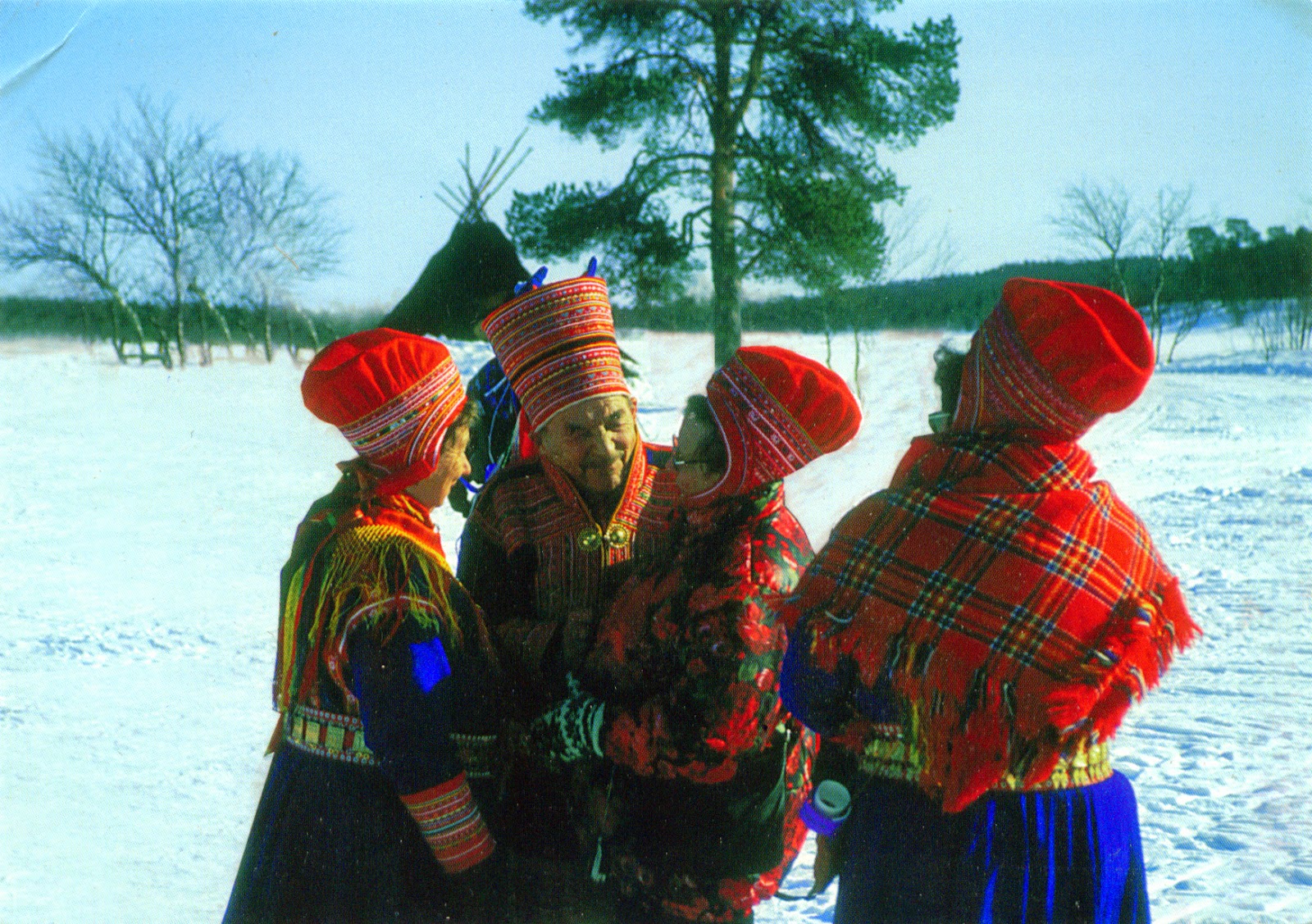 |
| 1014 Finland - A young Sami man |
Posted on 25.02.2014, 26.06.2014, 09.03.2017
The Sami people are the indigenous Finno-Ugric people inhabiting the Sápmi, the cultural region which today encompasses parts of far northern Norway, Sweden, Finland, the Kola Peninsula of Russia, and the border area between south and middle Sweden and Norway. Known also as Lapps, an exonym considered by them as pejorative, the Sami have pursued a variety of livelihoods (including coastal fishing, fur trapping, and sheep herding), but the most representative is the semi-nomadic reindeer herding. Their traditional languages are the Sami languages (Sàmigiella) and are classified as a branch of the Uralic language family.
 |
| 1117 Finland - Sami people |
Although they lived in Arctic Europe for at least 5,000 years, they have been for centuries the subject of discrimination and abuse by the dominant cultures, being recognized as an indigenous people only in the last part of the 20th century in Norway, Sweden and Finland, and in Russia not even today. In the late 20th century there were from 30,000 to 40,000 Sami in Norway and about 20,000 in Sweden, 6,000 in Finland, and 2,000 in Russia, but the sources are highly conflicting, indicating a total population from 80,000 to 160,000.
 |
| 2976 Norway - Sami children and a baby in komse (cradleboard) |
Called gákti or kolt, their traditional costume is worn both in ceremonial contexts and while working. Traditionally, it was made from reindeer leather and sinews, but nowadays it is more common to use wool, cotton, or silk. It differ from community to community, and the colours, patterns and the jewellery have deeper meaning. There are also different gákti for women and men (for men a shorter jacket-skirt, for women a long dress). Traditional gákti are most commonly in variations of red, blue, green, white, medium-brown tanned leather, or reindeer fur.
Read more »


